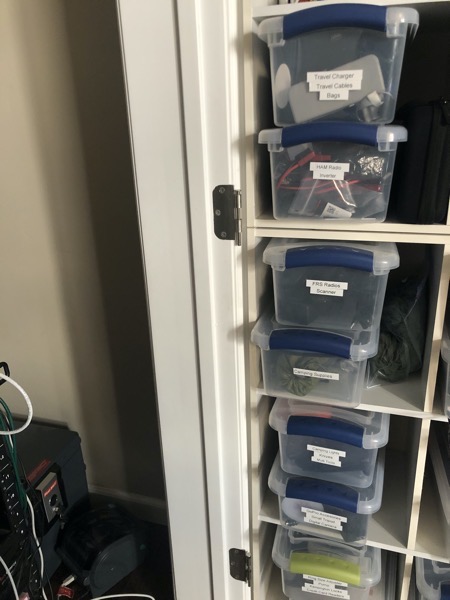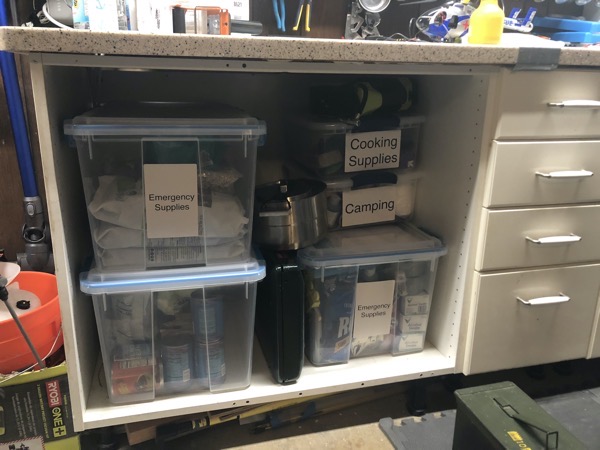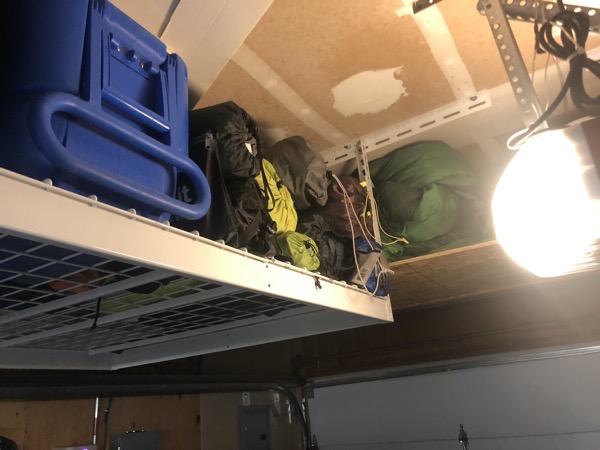How would I evacuate in an emergency?
This year has brought more reasons to prepare for an emergency and has gotten me asking myself if I am ready. When we had the great toilet paper shortage of 2020, I worked with my son on preparing our emergency kit as he was working on his Emergency Preparedness Merit Badge. This was a good start, but was more geared towards what to do when we didn't have access to supplies or food. We didn't think much about evacuations until the fires in Northern California started.
Several years ago, I wrote about preparing for an emergency. This was a start for what we'd need to take if we had to evacuate our house. Looking at the people leaving their homes in Santa Cruz and not being able to return for potentially weeks, having digital copies of things is only part of the solution.
How else can we prepare in case of an evacuation? Thinking about this, I realized that we have camping gear that is readily accessible. This includes tents, sleeping bags, ground clothes, flashlights, camping stove, etc. If we grabbed all this as we were leaving, we'd have a lot of gear needed to survive outside of our house. Clothing is one area that I will say that we're not that organized for an evacuation. We do have duffel bags under the bed, so we'd grab them and shove clothes in them.
While the reasons to evacuate our house in San Diego are small (tsunami is unlikely, wildfire where we live is also not likely; the most likely reason is post earthquake having a limited amount of time to gather stuff), I think that given 15 minutes, we would be in good shape to evacuate. The plan is pretty basic and consists of gathering the following:
- Laptop bag in my office - stuff it with the hard drives and other documents (extra keys and safe deposit key as well) that are kept in the fire safe. The bag already has an extra laptop charger and a way to connect the drives. Also, put my laptop in the bag.
- Portable electronics including hotspot, laptop, iPads and phones.
- Plastic boxes next to the fire safe that has chargers, some camping supplies, flashlights, HAM radio equipment.

- My wallet and keys.
- Portable HAM radio off my desk.
- Hats and coats that are easy to grab on the way out.
- 3 large plastic containers of emergency supplies that are in the garage.

- Tents, sleeping bags, chairs, and tarps used for camping.

- Gallons of water that are in the garage stored right as we enter the garage. We use these for camping, so they are replenished periodically.
- Some clothes. Put them a duffel bag stored under the bag. Include hiking shoes.
After pulling together everything, I'd load it into the car (along with the mammals) and go.
Our house is relatively small and my office is right next to the garage, so getting items out of my office and loading them into the car is easy. The camping gear is in a rack above my car and the emergency supply boxes are in a cabinet right in front of my car.
I hope that I never have to use my plan, but by thinking about it and rehearsing it in my head makes me rest easier at night.